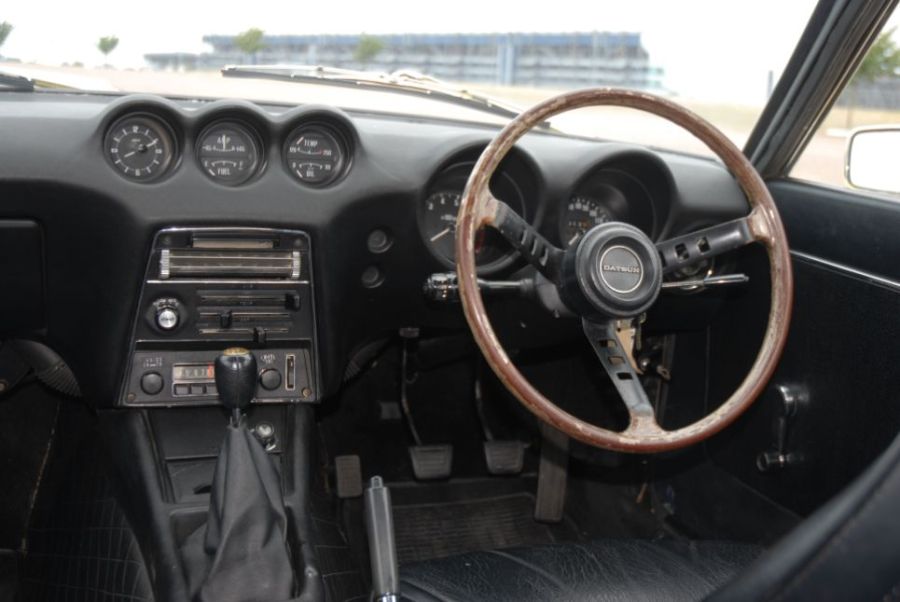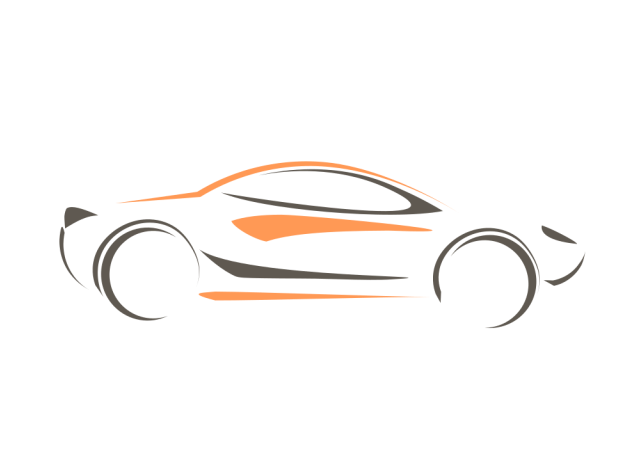Datsun 240Z/260Z: our verdict
If you’re hankering after a ’70s sports car that can entertain on the right road but also prove easy to live with then these Datsuns really do merit serious consideration. The performance feels more than lively enough compared to period rivals, and it doesn’t take long behind the wheel to realise how well-engineered they feel.
It makes for an enjoyable and worry-free ownership proposition, although as we mentioned earlier on it’s important to buy the best example you can. The potential for major corrosion issues and big restoration bills will quickly spoil the experience. But with excellent clubs on hand to provide advice and support there’s no reason to land yourself with a bad one. If your heart’s set on making your next classic a sporting one then we very much recommend looking to the East.
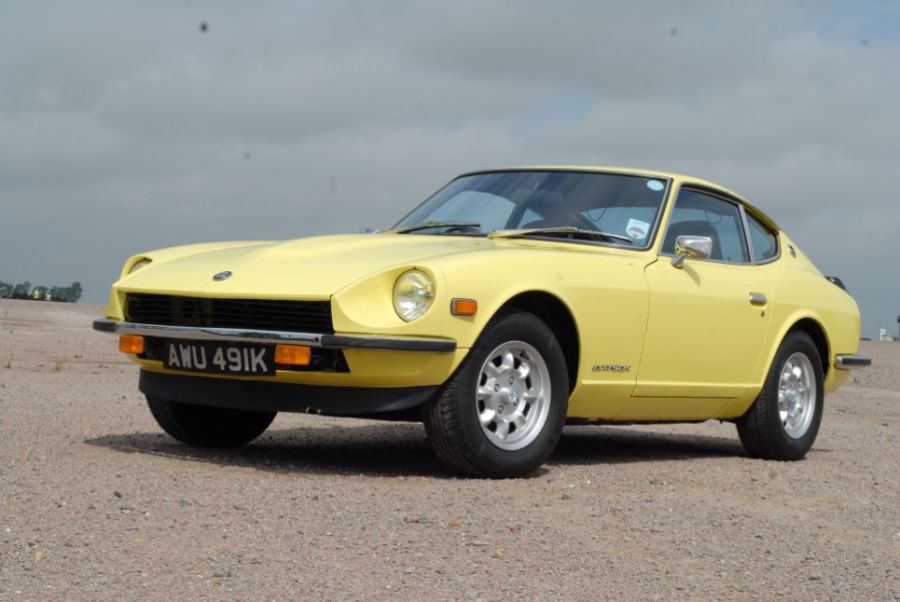
These have long been sought-after and desirable classics, and that’s reflected in values that have risen notably in the last decade or so – the very best have pretty much doubled in value in that time. The Datsun 240Z leads the way with outstanding examples now around £50,000 and good ones can easily command £30,000 or more even if a few jobs need doing.
Something scruffier in need of greater attention can still fetch somewhere in the mid-teens, although a little caution is needed before taking on one of those. You can probably knock around 25 per cent off these figures for left-hand drive examples. As for the 260, you can expect to pay around £6000-9000 less depending on condition, with 2+2s a little cheaper still.
As for finding one of these Zs, there’s usually a decent number in the classifieds – there’s more 240s to choose from – but a fair number sport modifications of one sort or another, which may or may not bother you. The market values originality, though, so think hard before taking this route.
Engine and transmission
The straight-six engine is easily capable of six-figure mileages with proper care, so it’s worth quizzing the vendor about the previous maintenance regime. Oil leaks are rarely an issue, but you’ll want to see at least 55psi oil pressure at normal road speeds; much less than that and you’ll need to investigate further. Equally as important is regular oil and filter changes which will prevent wear of the timing chain and camshaft, the latter a potential weak spot if servicing is neglected.
Also crucial is a healthy cooling system, so check for any signs of a unit getting hot and bothered and make sure that correct anti-freeze levels have been maintained to prevent corrosion within the alloy cylinder head. There’s not a great deal to worry about with the fuel system which employs a pair of Hitachi-SU carburettors, although it’s worth noting that few parts are interchangeable with traditional SUs found on many British classics. The linkage is an arrangement of cables and rods, so a jerky throttle response could mean it needs an overhaul.
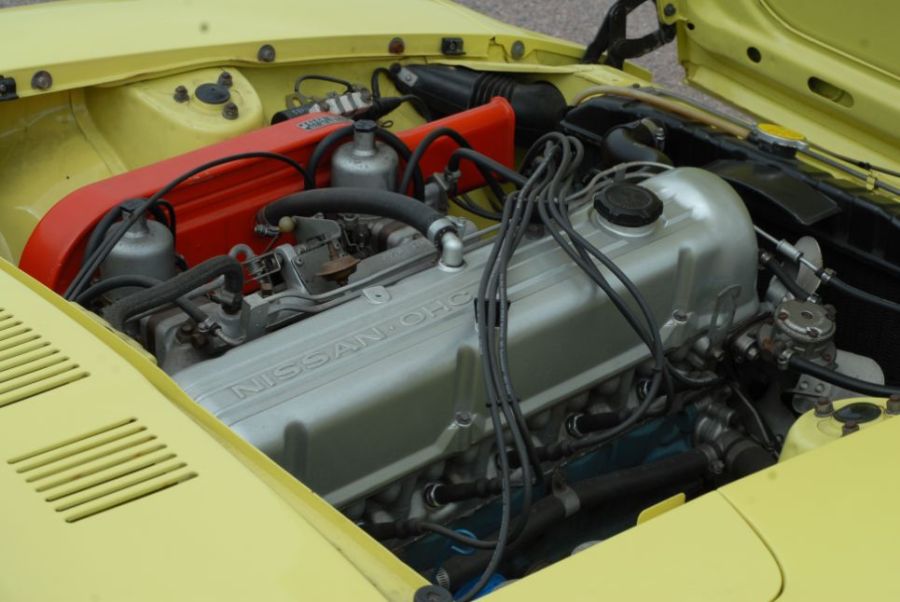
The ignition is trouble-free, too, with the only potential issue being a sticking advance/retard mechanism within the distributor; you could swap to electronic ignition but it’s not really necessary. Lastly, the engines respond well to tuning (sportier camshaft and the like) so ask about any modifications, one of which might be a stainless steel exhaust system – it’s the best option as original systems are hard to find.
The only transmission for UK cars was a five-speed manual unit – four-speeders will be imports as will automatics; don’t dismiss the latter as it may suit you, but conversion to a manual ‘box is possible if a bit labour intensive. Noisy bearings and worn synchromesh are the main issues you’ll encounter and the later unit (identified by a bent gear stick – early ones were straight) is considered stronger; it’s possible to fit it to an earlier car but some modification to the body shell are needed. Other than that, listen out for whines from the differential although they rarely fail completely, and for clunks from worn universal joints.
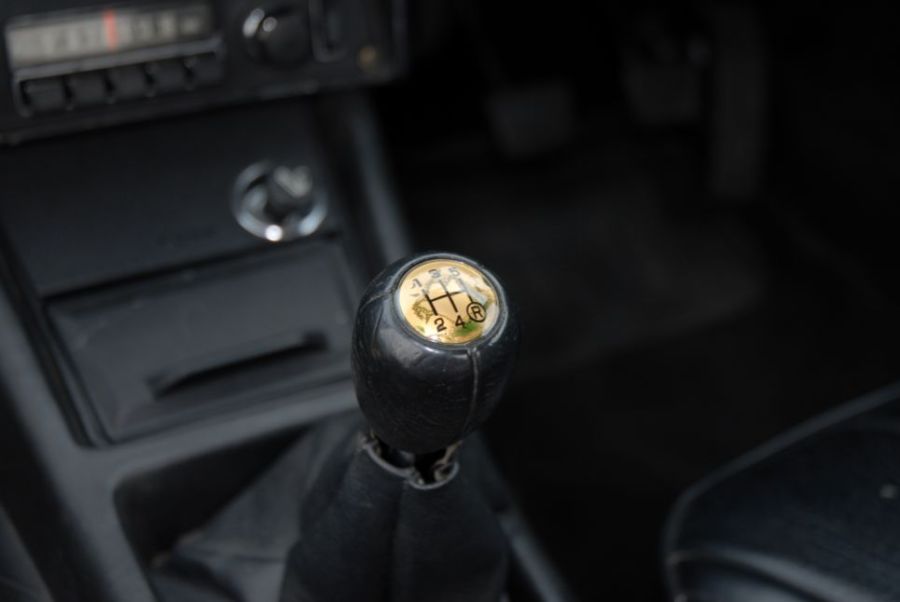
Bodywork
Rust-proofing was pretty much non-existent when these cars were new, and the subsequent corrosion did for many examples. Condition is everything so the mantra of ‘buy the best you can afford’ certainly applies here. They rust everywhere, so methodical checks are needed starting at the front where you should examine the leading edge of the bonnet, the front panel and the cross-member beneath the radiator. And don’t forget the battery tray.
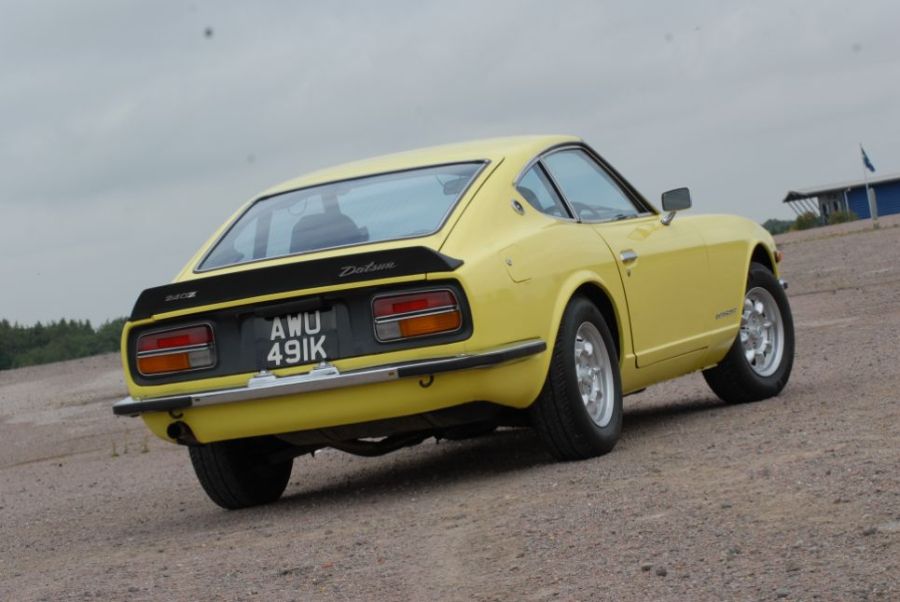
The bolt-on front wings rot, too, and you’ll need to feel up under the wing to check the condition of the metalwork there; there’s a strengthening plate in the inner wings that can rust away, too. Continuing towards the back, it’s a case of examining the usual spots such as the door bottoms, sills and rear wheel arches. The edges of the tailgate is another trouble-spot.
You’ll also want to ensure the underneath receives proper scrutiny, and as well as checking the state of the floors and footwells it’s important to establish the integrity of the chassis legs that run back from the front cross-member. Although some stuff is being re-made finding original panels and repair sections won’t be easy, so you’ll probably have to rely on searching for second-hand items or on the skills of a fabricator. A full-on restoration will get expensive so think long and hard before taking on a project. And there’s also the matter of accident damage, bodges and previous restorations that may not have been done to the standard you’d expect, so be sure to establish the quality of any work.
As for exterior trim parts, items such as the Lucas headlights should be easy enough to find but clubs such as the Classic Z Register (S30.org) are an excellent source of help and advice when it comes to tracking down bits. Specialists can refurbish the bumpers assuming they haven’t corroded beyond rescue, while pattern replacements are around £800 per pair.
Datsun 260Z
Datsun 260Z 2 + 2 (Australia)
At the Tokyo Motor Show 1973 Datsun first showed the new export model with a larger 2.6-liter six-cylinder (type L26), the 260Z, which went on sale in 1974. In addition to the previous two-seater, a 2 + 2-seater with a 30 cm longer wheelbase was added to the range in spring 1974. In 1975 the 260Z and 260Z 2 + 2 Deluxe were available.
The increase in displacement was due to the stricter emissions regulations in the main Z market, the USA, where around 148,000 copies of the 240Z had been sold; Despite the enlargement, the six-cylinder engine produced barely more horsepower there than before, as it also received a lower compression ratio and a catalytic converter in California.
In Japan the Datsun Fairlady stayed with the two-liter engine; the Z432 no longer existed.
The 260 Z 2 + 2 was introduced in Germany in the early summer of 1975, initially costing DM 23,950 and remaining in the range until June 1979; the two-seater was available here from 1975, as well as in other European markets, such as Switzerland. At the end of 1977, numerous minor changes were made to the color selection, interior, gearbox and engine, the output of which was increased by 3 kW (4 PS) (modified camshaft) and the top speed dropped from 205 to 194 km / h.
In the USA, almost 80,000 units of the 260Z and 260Z 2 + 2 were sold in just under two years (1974/1975). However, only 1,638 copies of the 260Z 2 + 2 made it to Europe.
In 2006 there were around 50 roadworthy and roadworthy (condition 3 or better) 260Z in Germany.
Suspension, steering and brakes
The independent suspension employed MacPherson struts at the front and a strut-type set-up at the rear and it provided the Datsun 240Z and 260Z with secure and predictable handling allied to decent ride quality. The same should be true today, so anything else points to the likes of worn dampers and bushes that are ready for replacement.
Sourcing parts isn’t particularly difficult and there’s scope for upgrades if you prefer something a little tauter, although it’s worth talking to owners who’ve done this before taking the plunge; it’s easy to spoil the standard set-up’s well-rounded abilities. The only other thing to check for is corrosion around mounting points and strut tops.
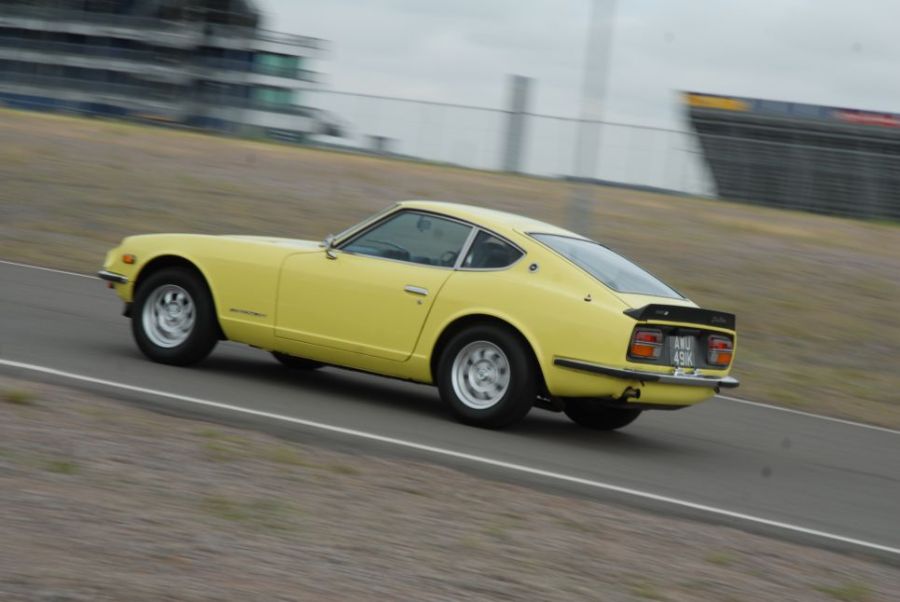
And speaking of making changes bear in mind that fitter wider tyres will make the accurate rack and pinion steering heavier. The Datsun 240Z was originally specified with 4.5J steel wheels – the trims are hard to find now and expensive when you do – but many now ride on alloys with Minilite-style rims proving especially popular. Watch for excessive play in the steering though, as you may struggle to get the rack reconditioned. Which leaves us with the brakes, and while the disc front and drum rear set-up was decent enough for its time they feel on the weak side today. They aren’t problematic, so it’s just a case of checking for wear, tear and neglect, but you might want to consider upgrading to larger discs and pads for more modern-day stopping power. Rear disc conversions can be found for around £1300 but unless you’ve substantially upped the performance you probably don’t need to go that far.
Datsun 240Z 1969-1975 | WikiAutos.ru
В 60-е годы после выпуска таких машин как «Honda S800» и «Toyota 2000GT» Япония завоевала славу производителя спортивных автомобилей. Единственное, чего ей недоставало, это ведущей модели, находившейся в массовом производстве, для продажи в Америке, автомобиля, который мог бы, появившись на этом огромном прибыльном рынке, потягаться с «Austin Healey 3000», чьи дни уже были сочтены, и бросить вызов стареющим Jaguar E-type и «Triumph TR».
В борьбу за популярность в 1969 году вступил «Datsun 240Z», ставший в 70-е годы самым продаваемым спортивным автомобилем. Недостаток романтичности и какой-то изюминки модель «240Z» с лихвой восполняла пропорциональностью мускулистых форм кузова, дизайн которого разработал Альбрехт Гоертц, создатель красивого «BMW 507». В создании модели «Z» с ее длинным капотом, углубленными фарами и гладкими напряженными линиями задних крыльев явно использовались некоторые дизайнерские элементы автомобиля Jaguar E-type с жестким верхом. И все же это был автомобиль чистокровный и элегантный, если не считать непривлекательные колпаки на колесах — типичный недостаток японских автомобилей, — что создавало его особую притягательность. Хорошо оборудованный двухместный автомобиль с кузовом типа хэтчбек «Datsun 240Z» немногим мог удивить, но все же под «кожей» имел все необходимое: двигатель — работающий плавно и мерно, шестицилиндровый рядный, объемом 2393 см3 и мощностью 151 л. с.
Соотношение цена/качество у Datsun 240Z
Мощность Datsun 240Z передавалась через пятискоростную коробку передач к технически продуманной задней подвеске, в устройстве которой использовались и стойки, и поперечные рычаги. Конструкция передней подвески также основывалась на стойках. Идеальная реечная передача обеспечивала легкость управления. В Америке за сумму, равную стоимости автомобиля «Triumph» малопривлекательной модели «Triumph GT6», клиент приобретал машину, прекрасную в управлении, способную развивать скорость до 201 км/ч. Страшный рев шестицилиндрового рядного двигателя соответствовал имиджу настоящего, «мужского», автомобиля.
Было продано 150076 автомобилей этой модели, пока в 1975 году на смену ей не пришла машина «Datsun 260Z». Стремясь усовершенствовать автомобиль, «Datsun» сделала новую модель менее резкой и агрессивной и, неизбежно, более тяжелой, медленной. Однако это было именно то, что соответствовало желаниям покупателей (американских, естественно). Уровень продаж продолжал расти. Автоматическая коробка передач и новая четырехместная версия с удлиненной колесной базой увеличили популярность автомобиля «Z», хотя сегодня убежденные пуристы не особо жалуют эту версию, считая ее более уродливой.
Datsun 240Z/260Z timeline
1969
Nissan announces the ‘S30’ Fairlady Z at the Tokyo Motor Show in October, with domestic sales beginning the following month. The model comes to the USA in December, and is sold as the Datsun 240Z.
1970
Although sales of the 240Z have yet to start in the UK, it makes its first appearance on these shores at the London Motor Show in October, with two cars originally destined for Australia on display. Another is entered in the RAC Rally in November.
1971
An automatic transmission option is introduced to the 240Z and the rear air vents are moved from the liftback to the C-pillar. UK sales of the 240Z begin in August, with a 2393cc engine making 151bhp and two-seat coupe bodywork. All official UK-spec 240Zs have a five-speed manual transmission. A total of 72 are sold by the end of the year, by which time a revised centre console and improved seats have been brought in.
1973
The 260Z is introduced in Japan and America. As well as a larger 2565cc 162bhp engine, these have the option of being built as 2+2s with rear seats, opening quarter windows and a stretched platform with an extra foot (30cm) in the wheelbase.
1974
The 260Z replaces the 240Z in Europe from February, only in 2+2 form. Over 300 are sold in the UK in the first year.
1977
In March imports of two-seat 260Zs are restarted. From this point all Europe-spec 260Zs receive the improved five-speed gearbox, taller final drive, alloy wheels and wider tyres, seats with cloth centres and viscous-coupled engine fan of the American-market 280Z (a model never officially sold in the UK or Europe).
1978
Despite being reintroduced just the previous year, the two-seat version of the 260Z is withdrawn from the UK market. This would be the best sales year for the Datsun Z, with nearly 1000 examples being sold in the UK.
1979
Sales of the 260Z are halted in August, with the replacement being the larger, heavier, more streamlined and more comfort-orientated 280ZX. Official UK sales of the 240Z and 260Z total 3636 examples, but the model’s huge success in North America means that total production was over 530,000 for all the ‘S30’ models.
Datsun 280Z
Datsun 280Z (1978)
In the summer of 1975, the 260Z was replaced exclusively in North America by the 280Z (not to be confused with its successor, the Datsun 280ZX ) with a further enlarged 2.8-liter in-line six-cylinder (type L28E). At the same time, the engine was switched from carburettors to injection. The injection corresponded to the principle of the L-Jetronic from Bosch . The cars delivered in California already had an unregulated catalytic converter .
A pure two-seater and the 2 + 2-seat variant were still in the program. By the end of the 1978 model year, more than 150,000 units of the 280Z had been sold in the USA.
In June 1976 the Japanese Fairlady, still with a two-liter engine, also received an injection (engine type L20E). As part of an advertising campaign , the Datsun 280 ZZZAP arcade machine appeared in November 1976 .
The 280Z was not offered in Europe. From autumn 1978 the 260Z and 280Z were replaced by the successor Datsun 280ZX in all markets .
The American company McBurnie used the 280Z in 1986 as the basis for a replica of the Ferrari 250 GTO .
Technical data Datsun 240/260 / 280Z
| Technical data Datsun 240/260 / 280Z | |||
|---|---|---|---|
| Datsun | 240Z | 260Z | 280Z |
| Engine: | 6-cylinder in-line engine (four-stroke) | ||
| Engine type: | L24 | L26 | L28E |
| Displacement: | 2393 cc | 2547 cc | 2753 cc |
| Bore × stroke: | 83 x 73.7 mm | 83 × 79 mm | 86.1 x 79 mm |
| Performance at 1 / min: | 112 kW (153 SAE PS) at 5600 | 93/95 kW (126/129 DIN-PS) at 5600 | 111 kW (151 PS) at 5600 |
| Max. Torque at 1 / min: | 200 Nm at 4400 | 190 Nm at 3500 | 220 Nm at 4400 |
| Compression: | 9.0: 1 / 8.8: 1 / 8.3: 1 | 8.8: 1 / 8.3: 1 | |
| Mixture preparation: | Two Hitachi SU carburettors | injection | |
| Valve control: | Overhead camshaft | ||
| Cooling: | Water cooling | ||
| Transmission: | Four-speed / five-speed manual transmission aW three-speed automatic | ||
| Front suspension: | Strut axle, coil springs | ||
| Rear suspension: | Chapman strut axle, wishbones below, coil springs | ||
| Brakes: | Disc brakes at the front, drum brakes at the rear | ||
| Steering: | Rack and pinion steering | ||
| Body: | Sheet steel, self-supporting | ||
| Track width front / rear: | 1354/1346 mm | ||
| Wheelbase: | Two-seater: 2304 mm 2 + 2: 2606 mm | ||
| Dimensions: | Two-seater: 4135–4404 × 1631 × 1295 mm 2 + 2: 4714 × 1651 × 1306 mm | ||
| Empty weight: | 1042-1065 kg | 1089 kg 2 + 2: 1270 kg | 1172 kg 2 + 2: 1325 kg |
| Top speed: | 185-195 km / h | approx. 194/205 km / h | approx. 210 km / h |
| 0-100 km / h: | 7.5-8.7 s | 9.4-10.5 s | 9.4-11 s |
| Consumption (liters / 100 kilometers): | approx. 15 super / normal | approx. 15 super / normal | approx. 11–12 super / normal |
| Price: | US $ 3,526 (1970) | US $ 5,289-6,089 (1974) | US $ 7,968-9,278 (1978) |
Datsun 240Z
Rear view
Datsun 240Z in motorsport
At the Tokyo Motor Show in late 1969, Nissan presented a new, closed sports car as the successor to the Datsun Fairlady, which was marketed again in Japan as the Fairlady and exported as the Datsun 240Z.
The two-seater station wagon with a self-supporting sheet steel body was exported with a 2.4-liter in-line six-cylinder (type L24) with a light alloy cylinder head and two Hitachi HJB equal-pressure carburetors . There was a choice of manual transmissions with four or five gears and a three-speed automatic. All the wheels were individually suspended from suspension struts and wishbones: a MacPherson at the front and a Chapman axle at the rear.
The 2.4-liter was not available in Japan (luxury tax was due above 2.0 liters), the Fairlady there had a two-liter in-line six-cylinder (type S20) with double camshaft cylinder head and 3 double carburetors from the Mikuni brand. On the home market, the Fairlady Z was offered with a shorter front section corresponding to the export model, next to the Fairlady ZG with a nearly 20 cm longer snout, with Plexiglas covers in front of the headlights and a cooling air opening in the bumper. In addition, there was the Fairlady Z432, a motorsport evolution model with its very own 24V two-liter six-cylinder engine (type S20), which was designed to be much shorter-stroke and therefore more easy-turning than the series machine (bore × stroke: 82 × 62.8 instead of 78 × 69, 7 mm). The production engine, like that of the 240Z, was equipped with two SU carburetors, the Z432 engine with three Mikuni double carburetors. The Z432R was based on the Z432, a lightweight version with Plexiglas panes and other measures to reduce weight.
A total of 156,073 vehicles of this type were built. The Datsun 240Z was introduced in Germany at the end of 1973 at a price of DM 17,600 and sold 303 times.
In 1996, Nissan began in the USA in the course of a «Vintage Z» marketing campaign to buy up used 240Zs and subject them to extensive restoration. These were then sold at ten different Nissan dealerships for $ 25,000 with a new vehicle warranty. Of the planned 200 copies, only 37 were completed and delivered in 1997 because the restoration took more time than expected.
Technical data Datsun 240Z / Datsun Fairlady
| Technical data Datsun 240Z / Datsun Fairlady | |||
|---|---|---|---|
| Datsun | 240Z (Germany) | Fairlady Z / ZG (Japan) | Fairlady Z432 (Japan) |
| Engine: | 6-cylinder in-line engine (four-stroke) | ||
| Engine type: | L24 | L20 | S20 |
| Displacement: | 2393 cc | 1998 cc | 1989 cc |
| Bore × stroke: | 83 x 73.7 mm | 78 x 69.7 mm | 82 x 62.8 mm |
| Performance at 1 / min: | 96 kW (130 DIN PS) at 5600 | 95 kW (130 JIS -PS) at 6000 | 118 kW (160 JIS-PS) at 7000 |
| Max. Torque at 1 / min: | 206 Nm at 4400 | 166 Nm at 4400 | 176 Nm at 5600 |
| Compression: | 9.0: 1 | 8.6: 1 | 9.5: 1 |
| Mixture preparation: | Two horizontal carburetors SU | Three horizontal twin carburetors Mikuni 40 | |
| Valve control: | Overhead camshaft, chain drive, Z432: 4 valves per cylinder | ||
| Cooling: | Water cooling | ||
| Transmission: | Five-speed manual transmission aW three-speed automatic | Four or five-speed manual gearbox aW three-speed automatic | Five-speed manual transmission |
| Front suspension: | Suspension strut axle, wishbones, coil springs | ||
| Rear suspension: | Chapman strut axle, wishbones below, coil springs | ||
| Brakes: | Disc brakes at the front, drum brakes at the rear | ||
| Steering: | Rack and pinion steering | ||
| Body: | Sheet steel, self-supporting | ||
| Track width front / rear: | 1354/1346 mm | ||
| Wheelbase: | 2305 mm | ||
| Dimensions: | 4135 × 1631 × 1295 mm | Z: 4115 × 1630 × 1285 mm ZG: approx. 4300 × 1630 × 1285 mm | 4115 × 1630 × 1290 mm |
| Empty weight: | 1090 kg | 995-1020 kg | 1040 kg |
| Maximum speed (factory): | 200 km / h | 180 km / h | 210 km / h |
| 0-100 km / h: | 9.5 s | not specified | |
| Consumption (liters / 100 kilometers): | approx. 12.5 p | approx. 10-15 p | approx. 11-16 p |
| Price: | DM 17,600 (1973) SFr 21,000 (1973) US- $ 3,526 (1970) | — | — |
Interior, trim and electrics
With a great driving position and ample space for a sports car the cabin was a comfortable place to be, perhaps just marred by the acres of plastic typical of the time. You can find replacement bits of trim if you discover any damage but they can be pricey, and you’ll want to check the top of the dashboard for cracks; repairs may be possible assuming things haven’t gone too far.
Later models got cloth inserts for the seats so these may be shabby by now, but otherwise it’s going to be a case of examining the vinyl for the usual splits and tears. You can either turn to a specialist trimmer or look to source new seat covers from the US. Scruffy carpets are nothing to worry about as replacement sets are available.
Turning to the electrics, there’s nothing really complicated here so a prod of all the switches will soon reveal anything on the blink. Corroded fuse connections can cause a few gremlins although it’s easily remedied, and it’s worth installing a relay in the headlight wiring as it takes the load off the fuse box. Lastly, check for inoperative dials and for any modifications carried out by previous owners; whether you’re happy with them depends on how you feel about originality, but you’ll want to ensure they’ve been done properly.
